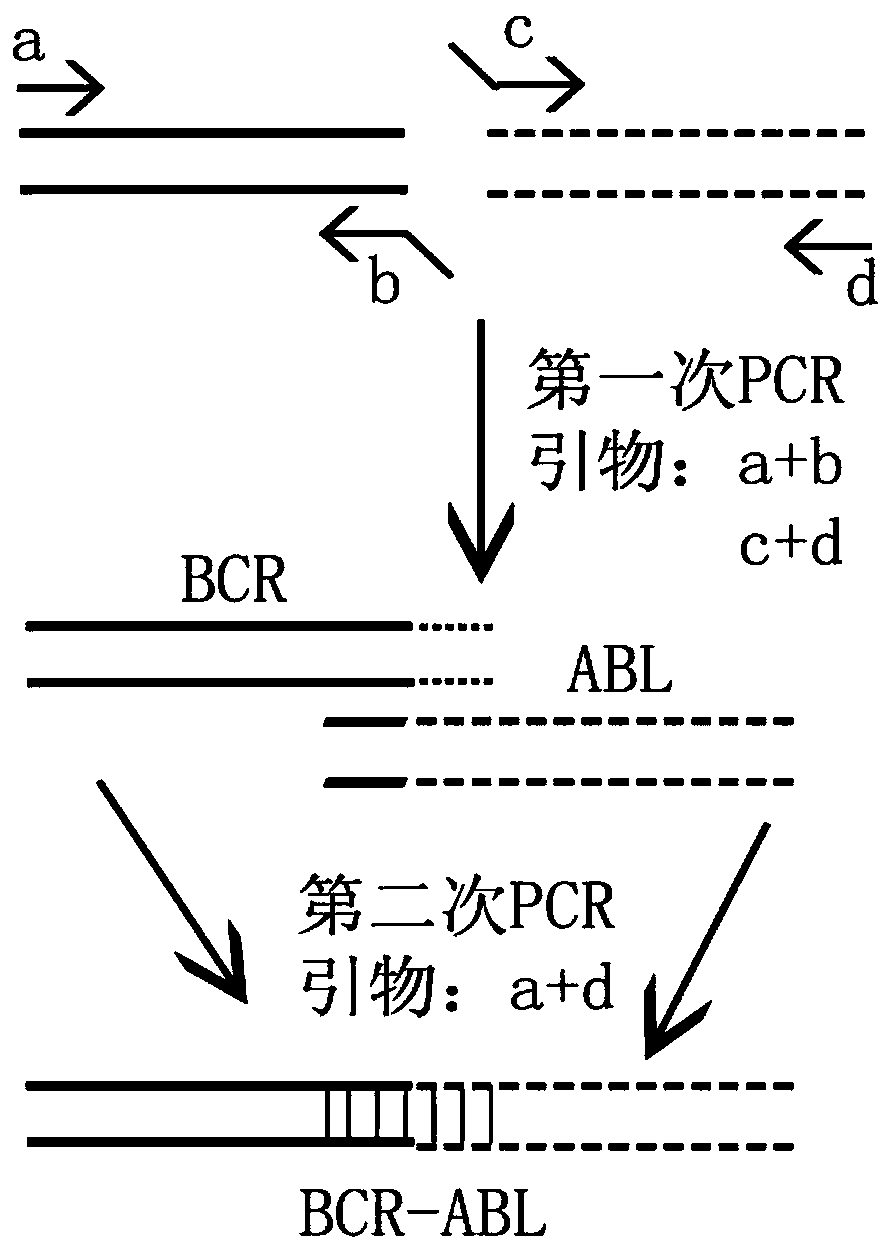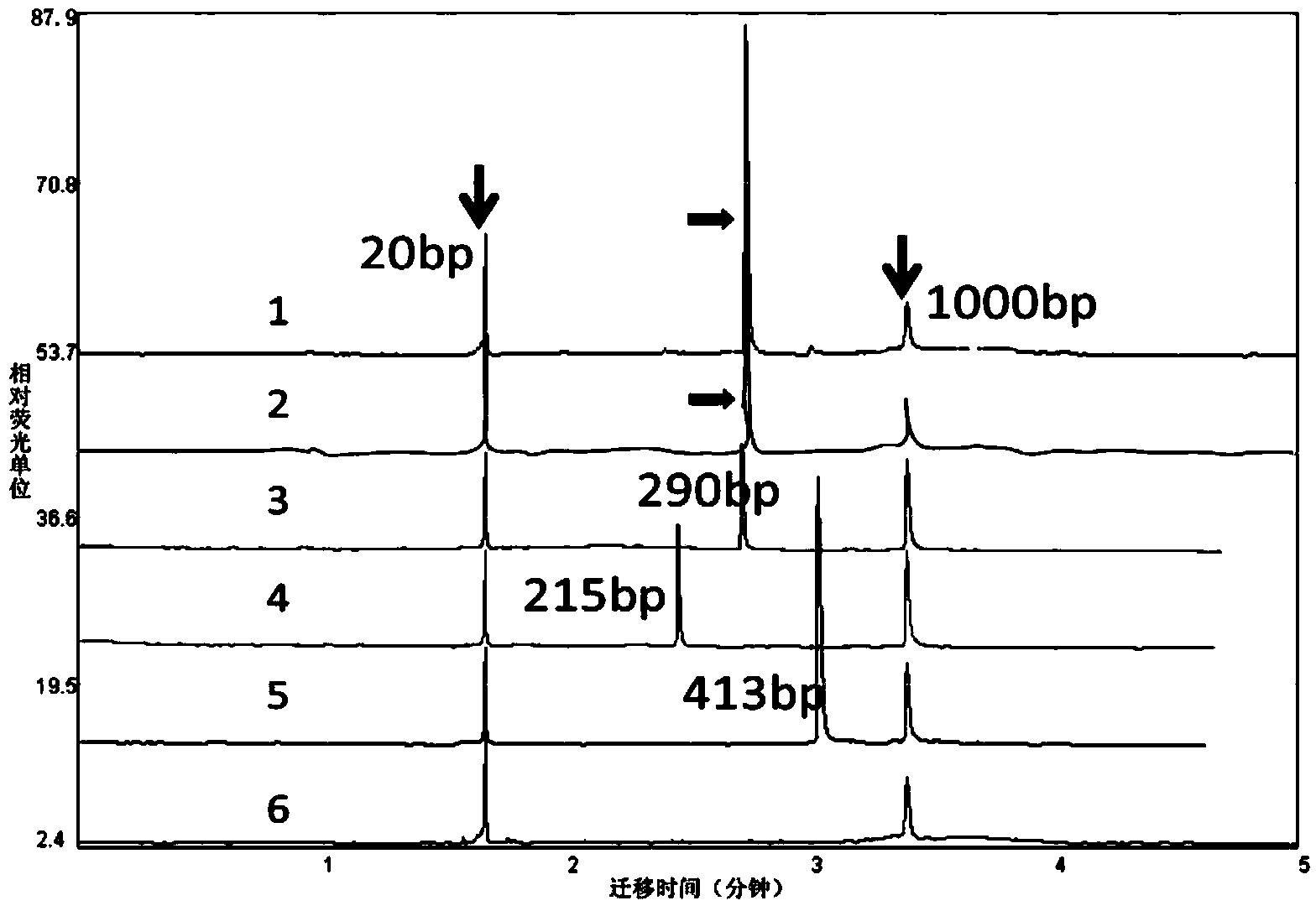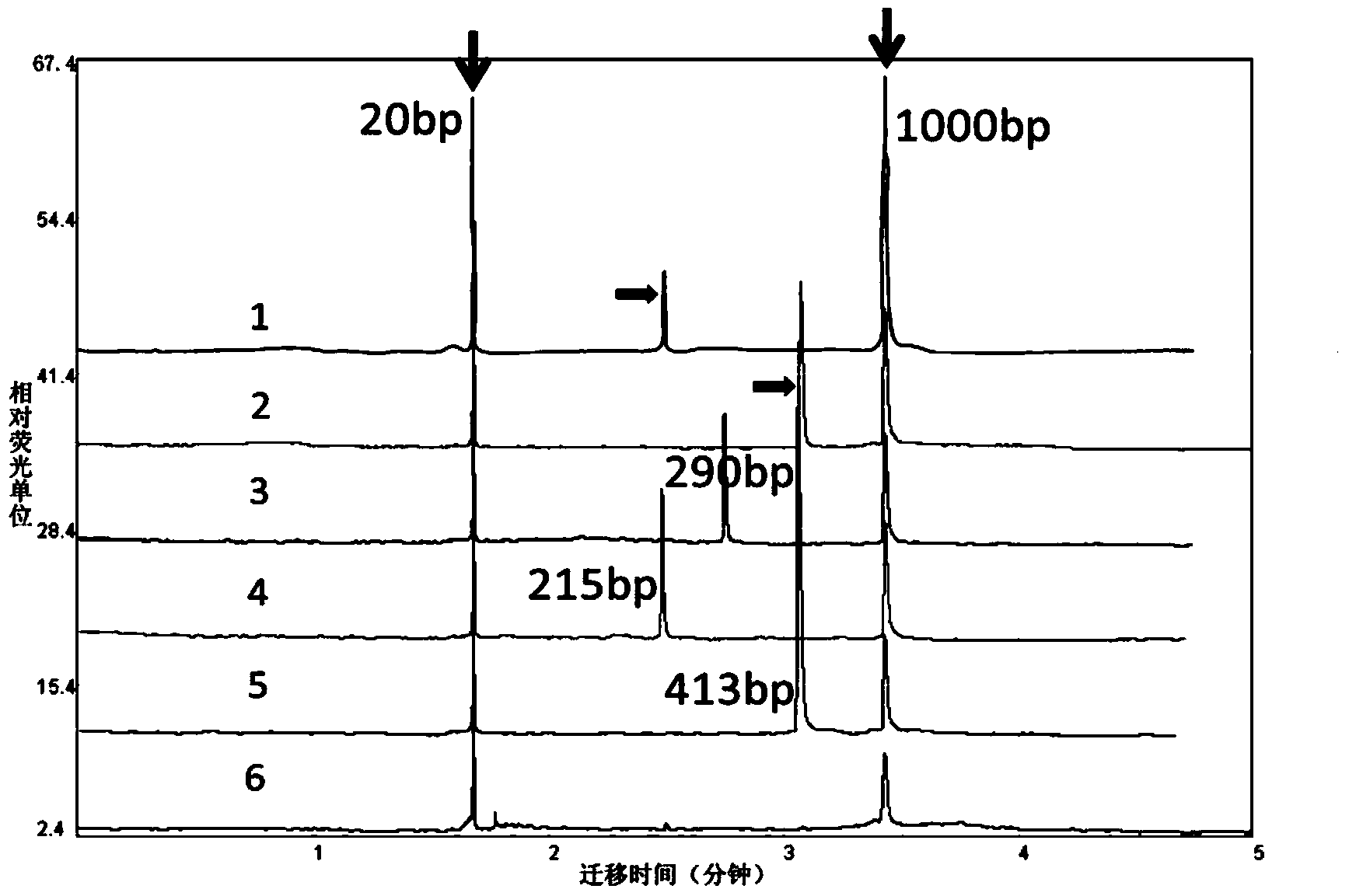Multiplex RT-PCR (reverse transcription-polymerase chain reaction) reagent kit for detecting leukemia BCR-ABL (Abelson proto-oncogene-breakpoint cluster region)
A RT-PCR and leukemia technology, applied in the field of leukemia detection, can solve the problems of limited application, limited qualitative research, expensive instruments and reagents, etc., and achieve the effect of low sample requirements, sensitive and fast detection, and simple operation
- Summary
- Abstract
- Description
- Claims
- Application Information
AI Technical Summary
Problems solved by technology
Method used
Image
Examples
Embodiment 1B
[0023] Example 1 BCR-ABL fusion gene detection kit and its use
[0024] 1 Prepare a kit including the following components: 1 tube of BCR-ABL gene PCR reaction solution (1200 μL), 1 tube of Taq enzyme (30 μL), and 1 tube of control substance (300 μL).
[0025] 2 Collection, storage and transportation of samples:
[0026] 2.1 Type of sample used: fresh blood.
[0027] 2.2 Sample collection, preservation and transportation: RNA extraction is performed immediately after fresh blood is collected with an anticoagulant tube, or white blood cells are extracted and frozen in liquid nitrogen and stored at -80°C. Samples are shipped on dry ice over long distances.
[0028] 3. Nucleic acid extraction:
[0029] It is recommended to use the MagCore Compact Nucleic Acid Extractor and operate according to the instructions of its matching whole blood RNA extraction kit (MRN-01). Finally, an RNA sample with an elution volume of 200 μL can be obtained from every 400 μL blood sample, and reve...
Embodiment 2
[0037] Example 2 Application of BCR-ABL fusion gene detection kit to detect 5 cases of clinical samples
[0038] The blood samples of 2 patients with chronic myelogenous leukemia and 2 patients with acute lymphoblastic leukemia identified by karyotype analysis and 1 healthy blood sample without BCR-ABL were selected, and the RNA was extracted immediately after reverse transcription, and the obtained reverse transcription The recorded product was detected, and the reference substance and NTC were detected at the same time.
[0039] Interpretation of test results: The no-template control substance NTC of the BCR-ABL fusion gene has no other peaks except the marker chromatographic peak (20bp, 100bp), indicating that the system is not contaminated; the control substance has three fusion forms with the BCR-ABL fusion gene The corresponding peaks of e1a2, e13a2 and e14a2 are 413bp, 215bp and 290bp, indicating that the system can effectively detect the BCR-ABL fusion gene.
[0040] ...
Embodiment 3
[0042] Example 3 Simultaneous detection of 50 clinical samples using the BCR-ABL fusion gene detection kit and the clinical gold standard karyotype analysis technique
[0043] A total of 50 leukemia blood samples were selected, among which 45 cases were identified as positive by clinical gold standard karyotype analysis, and 5 cases were identified as negative. Immediately after RNA extraction, reverse transcription was performed, and the obtained reverse transcription product was detected with a BCR-ABL fusion gene detection kit. The results are shown in Table 1.
[0044] Table 1 Comparison of two methods for detecting BCR-ABL fusion gene results
[0045]
[0046] Note: McNemar test was used for paired four-table data, χ 2 =0, P>0.05, Kappa=0.756
[0047] Table 1 shows the comparison between the results of the detection kit and the karyotype analysis. The sensitivity of the multiple RT-PCR detection of the BCR-ABL fusion gene established by this kit is 97.8% (44 / 45), and t...
PUM
 Login to View More
Login to View More Abstract
Description
Claims
Application Information
 Login to View More
Login to View More - R&D
- Intellectual Property
- Life Sciences
- Materials
- Tech Scout
- Unparalleled Data Quality
- Higher Quality Content
- 60% Fewer Hallucinations
Browse by: Latest US Patents, China's latest patents, Technical Efficacy Thesaurus, Application Domain, Technology Topic, Popular Technical Reports.
© 2025 PatSnap. All rights reserved.Legal|Privacy policy|Modern Slavery Act Transparency Statement|Sitemap|About US| Contact US: help@patsnap.com



